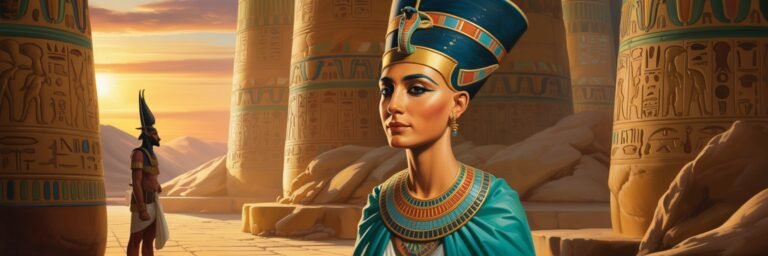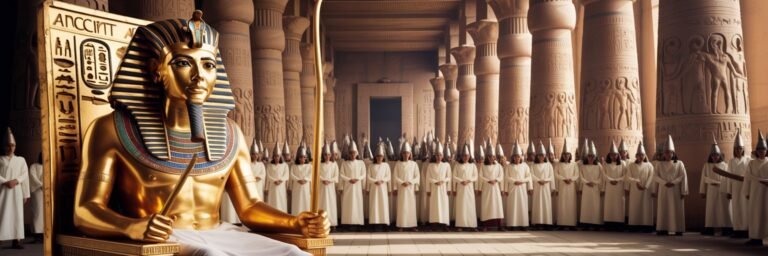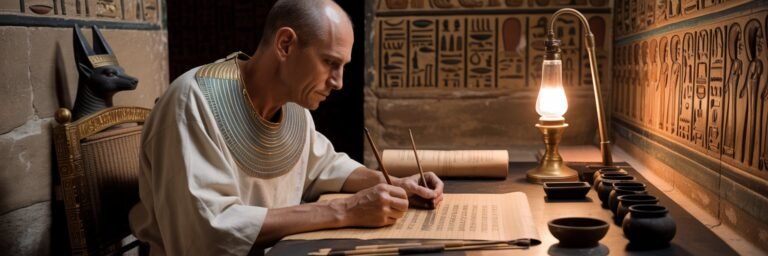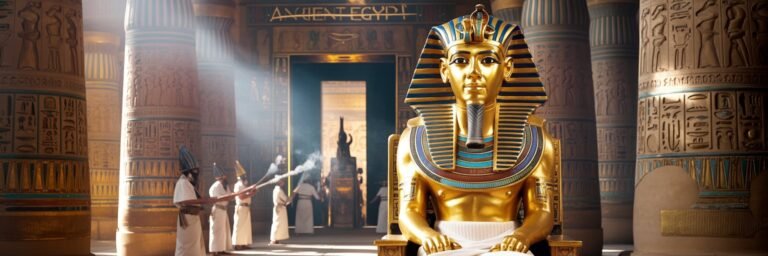For over 3,000 years, the pharaohs of ancient Egypt ruled a civilization that flourished along the banks of the Nile. They built monumental pyramids, established grand temples, and left behind an intricate legacy that still fascinates historians and archaeologists today. While much is known about these legendary rulers, many secrets remain hidden in the sands of time. From mysterious deaths to lost tombs, the pharaohs’ untold stories continue to captivate scholars and enthusiasts alike.
The Enigma of Tutankhamun’s Death
One of ancient Egypt’s greatest mysteries is the sudden and unexpected death of Tutankhamun, the boy king who ruled during the 18th Dynasty. When British archaeologist Howard Carter discovered his nearly intact tomb in 1922, it was a treasure trove of golden artifacts and precious relics. However, the circumstances surrounding Tutankhamun’s death remain shrouded in mystery.
Theories range from an accidental fall to foul play. Some evidence suggests that he may have suffered from a leg fracture that became infected, while others speculate that he was assassinated due to political rivalries. CT scans of his mummy indicate possible genetic disorders caused by inbreeding within the royal family, which may have contributed to his premature death at the age of 19. Despite modern technology, the truth behind Tutankhamun’s demise continues to elude experts.
The Disappearance of Queen Nefertiti
Queen Nefertiti, known for her iconic bust displayed in the Neues Museum in Berlin, was one of ancient Egypt’s most powerful and enigmatic women. She ruled alongside her husband, Pharaoh Akhenaten, and played a crucial role in his religious revolution, which replaced traditional Egyptian gods with the worship of the sun god Aten.
However, after Akhenaten’s reign, Nefertiti seemingly vanished from historical records. Some scholars believe she may have ruled Egypt briefly under the name Neferneferuaten, while others theorize that she was exiled or assassinated. Recent discoveries hint that her tomb may lie hidden within a secret chamber behind Tutankhamun’s burial site in the Valley of the Kings. If found, it could reveal groundbreaking insights into one of Egypt’s greatest queens.
The Curse of the Pharaohs
When Howard Carter opened Tutankhamun’s tomb, rumors of a deadly curse spread rapidly. The alleged “Curse of the Pharaohs” was said to bring misfortune or death to those who disturbed the boy king’s resting place. Shortly after the discovery, Lord Carnarvon, Carter’s financial backer, died under mysterious circumstances. Others involved in the excavation also suffered untimely deaths, fueling the belief in a supernatural force protecting the tomb.
While science dismisses the curse as mere superstition, some researchers suggest that ancient tombs may contain deadly bacteria or toxic mold that could cause illness. Regardless of the explanation, the legend of the Pharaoh’s Curse continues to intrigue and inspire myths.
The Secret Chamber in the Great Pyramid
The Great Pyramid of Giza, built for Pharaoh Khufu (Cheops), has stood for over 4,500 years as a testament to the engineering genius of the ancient Egyptians. Despite extensive exploration, this colossal structure still holds secrets.
In 2017, scientists using advanced scanning technology detected a large hidden void above the Grand Gallery. This mysterious chamber, estimated to be at least 100 feet long, has not yet been explored, and its purpose remains unknown. Some speculate it could be a hidden burial chamber, while others suggest it was built to relieve weight from the structure above. Until further investigations are conducted, the secrets of the Great Pyramid remain locked within its ancient stone walls.
The Forgotten Pharaoh: Hatshepsut
One of Egypt’s most remarkable rulers was Hatshepsut, a woman who defied tradition by declaring herself Pharaoh in the 15th century BCE. She ruled Egypt for over two decades, overseeing a period of prosperity, extensive trade, and monumental construction projects.
However, after her death, her successor Thutmose III attempted to erase her from history by defacing her statues and inscriptions. For centuries, her legacy was lost until archaeologists rediscovered her temple at Deir el-Bahari and identified her mummy in 2007. Today, Hatshepsut is celebrated as one of Egypt’s most powerful female rulers who challenged societal norms to take her rightful place on the throne.
Ramses the Great: The Pharaoh Who Lived Over 90 Years
Pharaoh Ramses II, also known as Ramses the Great, ruled Egypt for an astonishing 66 years during the 19th Dynasty. He is famous for his monumental structures, including the Abu Simbel temples, and his military conquests that expanded Egypt’s empire.
Remarkably, Ramses II lived into his 90s—a rare feat in the ancient world—fathering over 100 children. His legacy endured long after his death, as later pharaohs often invoked his name to legitimize their own rule. His well-preserved mummy, discovered in the 19th century, still amazes scientists with its remarkable state after thousands of years.
Final Thoughts
The pharaohs of ancient Egypt continue to captivate us with their incredible achievements, untold secrets, and enigmatic lives. Whether through the mystery of hidden tombs, the unexplained deaths, or the enduring legends of their rule, these ancient kings and queens remain some of history’s most fascinating figures. As technology advances and new discoveries emerge, we may one day unlock even more secrets of the pharaohs and their extraordinary civilization.






